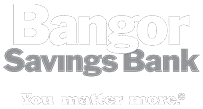
Does your bank offer online banking? If it does, do you participate?
According to Statista.com, there are an estimated 208 million digital banking users in the U.S. for 2023. If you are not one of them, you might be wasting time and money.
Simply put, online banking is the most convenient way to monitor your checking and savings accounts, transfer money from one account to another and pay your bills. You can have your paycheck automatically deposited in the bank of account of your choice if you also set up direct deposit at work. You'll rarely need to step foot in a bank again for such transactions.
The rise of online banking
If you are not participating in at least some form of online banking, you are in the minority. PwC’s 2018 Digital Banking Consumer Survey highlighted the rise of 'Omni-digital' banking segment, who do not use physical branches or call centers to interact with their financial institution. Their contact is almost exclusively on their desktop computer, tablet, or mobile phone. Roughly 49% of consumers fit in this segment. Smartphone adoption has risen as well, with 15% of consumers having a preference for mobile access. That's up from 10% the previous year.
The benefits of online banking
A growing number of consumers are now paying their bills online as well. According to a January 2017 report by Credit Union Times, more than half of all bills are paid online. Payments made directly on biller sites had grown to 73% in 2016, up from 62% in 2010. Bill payments with debit cards doubled to 15%. There's a simple reason for this: It is convenient. Not surprisingly, the use of checks to pay bills decreased by 20 percentage points from 2010 to 2016.
Paying bills the old-fashioned way remains a hassle. You have to get out your checkbook, write a check, fill in your checkbook's ledger, address an envelope, find a stamp and then walk or drive your payment to a mailbox or post office.
That takes time. With online banking, that is easy.
If you want to pay your credit card bill, you just log onto your bank's Web site, enter your username and password, check your account balance and then authorize a payment. Your money is then sent electronically to your creditor.
Paying bills online isn't the only convenience. You can also check your current account statements whenever you'd like, again simply by logging onto your bank's online banking portal. Most banks provide plenty of information on your account, allowing you to scan backward in time to see what you've spent, what you've taken in and how healthy your balance is at any given moment.
If you've also set up direct deposit with your employer, you'll make your banking an even simpler task. Your paycheck will automatically show up in your checking or savings account on the day you get paid. You will not have to wait for human resources to drop off your check. Moreover, you will not have to drive it to your bank to deposit it.
Many banks also offer mobile banking. Under this service, you can download an app to your smartphone or tablet and then access your accounts on the go. This is perfect if you need to transfer money while you are commuting to work or while you are in line at the grocery store.
Safety first
Of course, you will have to practice smart Internet skills if you participate in online banking.
To start, you can protect your accounts by choosing strong passwords. You want your password to be one that you can easily remember but that no one else would guess. It is best to include letters, symbols and numbers in your password. Be sure not to use easy-to-guess passwords such as the street on which you live or your birth date.
You might, though, pick the phone number of a favorite restaurant -- one that you've called for takeout so often you can easily remember -- followed by three or four letters.
